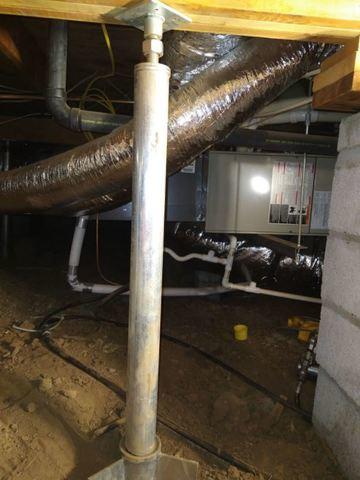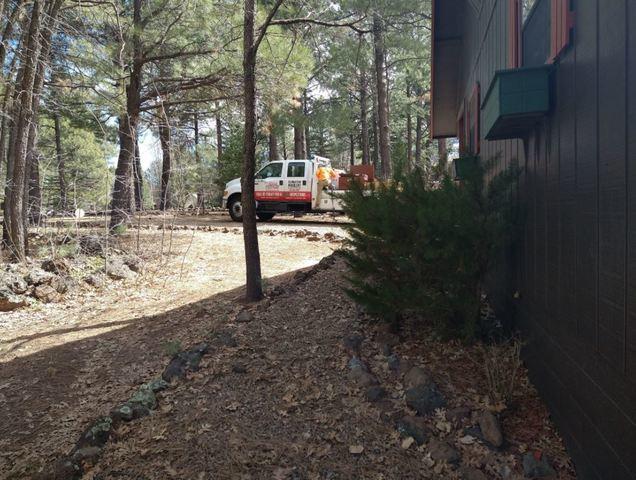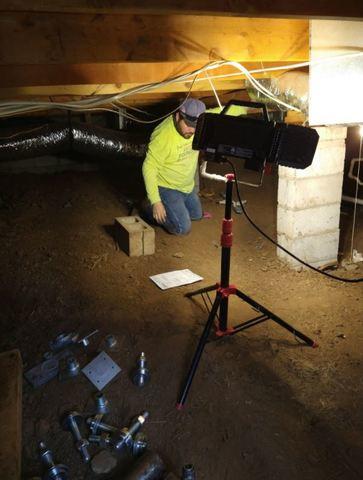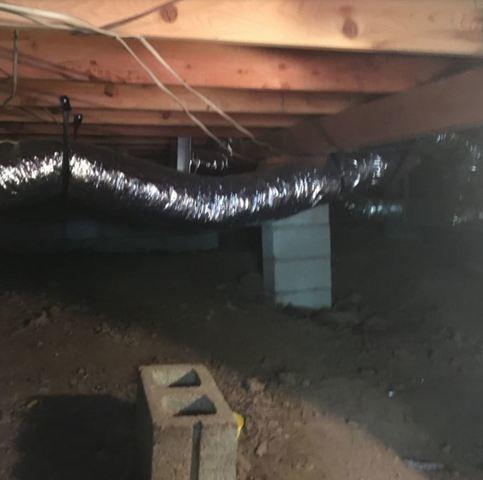Sagging Crawl Space Repaired in Pinetop, AZ
Challenge
The owners of this 1974 Pinetop, Arizona home reached out to Arizona Foundation Solutions after noticing some symptoms of failure in the existing crawl space support system. Symptoms included floors that were out of level, doors that are sticking or pinch, windows that are sticking or pinched, outside concrete out of level as well as interior and exterior wall cracks. The homeowners wanted to address the issues before they became any worse.
After an initial, level a foundation inspection was completed, it was determined a Forensic Engineering Report would be needed in order to determine the root cause of the crawl space foundation sagging in areas.
Exterior Inspection: The exterior of the location was visually inspected. Items such as foundation cracks, exterior wall cracks, improper grading, type of structure, poor drainage, gutters or no gutters, bowed retaining walls, large trees close to the foundation and any type of obstructions that may or may not influence the repair process were noted and recorded.
Interior Inspection: The interior of the location was visually inspected. Items such as floor cracks, wall cracks, ceiling cracks, sloping floors, uneven counter tops, doors and windows that are out of alignment, cracked window glass and bowed walls were noted and recorded.
Manometer Survey: The manometer survey, also known as a floor survey, is a measurement of the differences of interior floor elevations. The flatness of the interior floor was measured using a highly accurate survey device known as a Manometer. The entire interior floor area was surveyed and the elevations were recorded. These data points were then entered into a computer program that provides a topographical map showing the high and low elevation contours of the floor surface. This topographical map shows where the foundation is out of level and shows where support and stabilization is needed. The floor survey also demonstrates whether any floor slab heave or settlement exists.
After examining the home and performing the manometer survey, Arizona Foundation Solutions believes the home could be experiencing foundation settlement at the center of the home near the Master Bathroom of the home as shown by the damage and lower readings. The drop off in floor elevations on the topographical map is consistent with a foundation settlement pattern. Settlement can be caused by one or any combination of many factors including sub-grade saturation of moisture due to poor drainage, years of storm runoff, plumbing leaks, improper compaction, the lack of a proper foundation system, and/or (in most cases) natural earth movement.
There are cracks in the floor slab. When the slab cracks all the way through, the separate sections can move independently of one another. This allows for severe damage to flooring and other signs of interior stress like pinched doors, drywall, and/or ceiling cracks.
Solution
AZFS believes the best way to stabilize the support beams in the crawl space is with SmartJacks – a total of 6. These are adjustable galvanized supports engineered to be placed under the sagging floors to help prevent settlement of the floor joist system. The SmartJack sequence should start at approximately 2’ off each perimeter wall and should not be spaced more than 7’ on center (exact spacing to be determined after load bearing calculations). An engineered push pier will be driven concentrically beneath the beam at each Smart Jack location to provide a footing for each Smart Jack. If for whatever reason the installation of concentric piers is not possible, a concrete footing of engineered size will be poured beneath the smart jack to distribute the load. The SmartJacks will then be cut to size and set in place. Finally, the units will be adjusted to lift the sagging floors back to their best functioning point or the Highest Practical Maximum.
Composite interlocking can be performed to tie the broken pieces of the concrete together. The existing cracks will be cleaned, and non-parallel lines will be cut across the existing cracks. Next carbon fiber laminate stitches will be inserted into the non-parallel cuts and then the gaps will be filled with a 2-part poly. Finally, the crack should be ground smooth to minimize the differential. If done properly, this will allow the slab to function as one floating unit to help prevent the damages to flooring, ceiling and walls. If this is instead expansion joint separation, the joint should be cleaned, routed, and re-caulked with an expansive joint filler. A determination as to which repair is needed will be made on site once the crack is exposed.
Project Summary
Engineer: Néstor J. Brea











